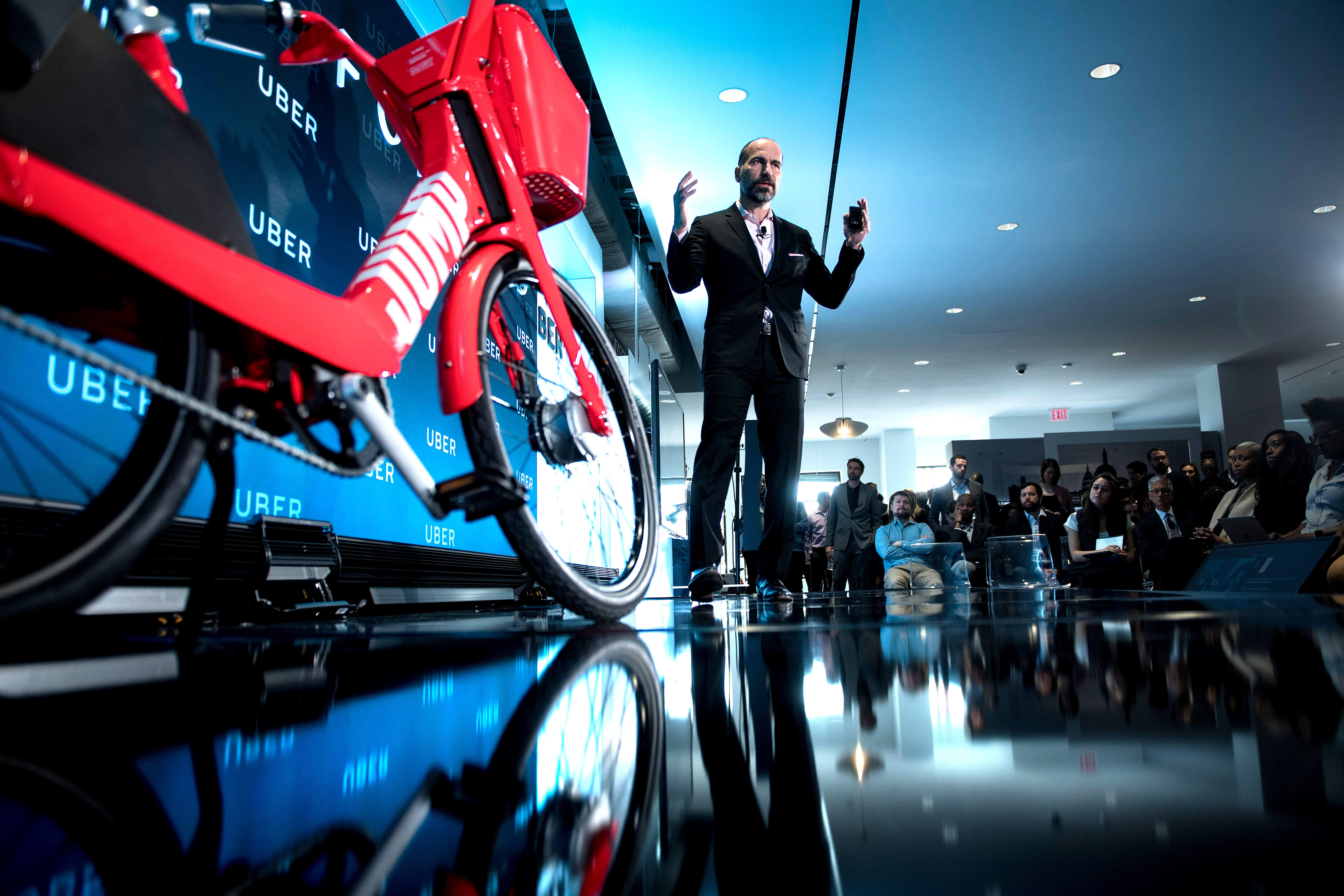Uber bets big on ... bicycles?
The ride-hailing company bought an e-bike startup. Here's why.


The future of transportation is the bicycle. At least, Uber seems to think so.
Earlier this week, the ridesharing app solidified a $200 million purchase of Jump, a dockless e-bike service. The humble bicycle has somehow become hot.
But like most things Uber does, there is an obvious reason for the move, and another, more subtle one. As the company expands its range of offerings, from the now-familiar ride-hailing app to freight, self-driving cars, and now e-bikes, it's increasingly clear that its goal is not to become a vehicle company. Instead, it's something much more ambitious: An Amazon for transportation.
The Week
Escape your echo chamber. Get the facts behind the news, plus analysis from multiple perspectives.

Sign up for The Week's Free Newsletters
From our morning news briefing to a weekly Good News Newsletter, get the best of The Week delivered directly to your inbox.
From our morning news briefing to a weekly Good News Newsletter, get the best of The Week delivered directly to your inbox.
That isn't to say the e-bike is a mere stepping stone. Across the globe, the bicycle and its electrified companion are quietly making waves. In China, for example, cycling has reduced the costs associated with congestion by $2.6 billion as a slew of bike share startups have emerged. In the U.S., regulators are finding ways to let e-bikes into existing bike lanes to ease their adoption. Around the world, bike shares are growing at a rapid rate.
It may seem odd that the bicycle, a decidedly 19th-century invention, is becoming cool once again. But it makes a great deal of sense. Transportation is often plagued by a last mile problem: the fact that a trip from one's home to a subway or bus stop can be just long enough to discourage walking. A bicycle gives people the option to not own a car but still be able to get to a grocery store, train station, or friend's place without having to walk the whole way — filling a niche that could make bicycles a significant part of our transportation infrastructure.
As prominent tech analyst Horace Dediu argues, "bikes will eat cars" because they are more flexible. They are part of what he calls "micromobility," a solution for those aforementioned short trips. Bikes can be carried on a train or bus, or ridden down alleys or gridlocked streets, and they are cheap to purchase and maintain. They are the solution for all those in-between situations when a destination is just a bit too far too to walk, but — especially in urban environments where parking is limited and traffic is common — driving is more trouble than it's worth.
For its part, Jump offers bikes that can be left locked to existing bike racks or the appropriate street furniture. The bikes are also electric-assist, meaning that while they are still pedal-powered they also feature a supplementary electric motor. Riders can thus avoid breaking a sweat while going up hills — an important plus for commuters who are heading into work or even a first date.
A free daily email with the biggest news stories of the day – and the best features from TheWeek.com
For Uber, however, the purchase is about thinking bigger. Acquiring Jump allows the company to offer one more choice for consumers looking to get around without owning a car: For short trips in good weather, there are Jump's bikes; for longer trips, or those that require some storage or cover, there are cars waiting to be hailed on the Uber app.
This brings us back to Amazon. Earlier this year, Uber's CEO said "cars are to us what books are to Amazon" — that is, merely an entry point to a much larger play. Amazon has now become a multi-headed hydra that, rather than being a bookseller, is actually best at producing new businesses like cloud computing, automated grocery retail, or voice assistants.
In a similar vein, what Uber wants isn't to be a company that just provides vehicles. Instead, it wants to be the layer between transportation and the world. In the near future, transportation will change significantly. Self-driving cars will become more common, and bike shares will continue to rise in popularity. This shift won't simply be a gradual evolution, but will rely on a host of systems: mapping technologies for self-driving cars, sensors, data networks, connected bike docks, and the bicycles themselves. And what will unify them all is a software layer that delivers these various parts to various users.
Uber wants to be that layer. It's the difference between being an app maker and being Apple or Google. Owning the infrastructure is the truly powerful, profitable thing.
Despite the company's recent setbacks — not just its troubles with former CEO Travis Kalanick, but also the first pedestrian death from a self-driving car — it's clear that Uber is still set on being dominant, aggressively expanding into new markets and sectors while working to become the key player in transport. And though the bicycle may not be the crux of that mission, the humble two-wheeler is still an important symbol of where the company is headed: not to become just another car or bike dealer, but the organization that will define how we ride into the future.
Navneet Alang is a technology and culture writer based out of Toronto. His work has appeared in The Atlantic, New Republic, Globe and Mail, and Hazlitt.
-
 How climate change is affecting Christmas
How climate change is affecting ChristmasThe Explainer There may be a slim chance of future white Christmases
-
 The MAGA civil war takes center stage at the Turning Point USA conference
The MAGA civil war takes center stage at the Turning Point USA conferenceIN THE SPOTLIGHT ‘Americafest 2025’ was a who’s who of right-wing heavyweights eager to settle scores and lay claim to the future of MAGA
-
 The 8 best drama movies of 2025
The 8 best drama movies of 2025the week recommends Nuclear war, dictatorship and the summer of 2020 highlight the most important and memorable films of 2025
